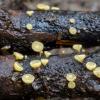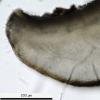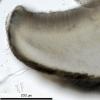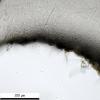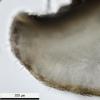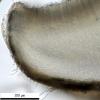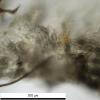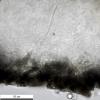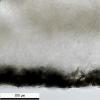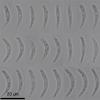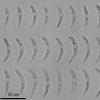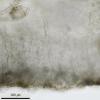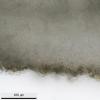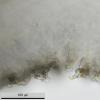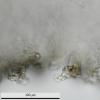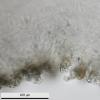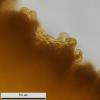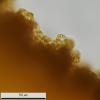
09-12-2025 12:06
 Andgelo Mombert
Andgelo Mombert
Bonjour,Je recherche l'article concernant Hypobryo

07-12-2025 16:07
Arnold B├╝schlenHallo, ich habe in einer Moos-Aufsammlung (epiphy

08-12-2025 21:04
Mark Stevens"Hello everyone,I'm relatively new to microscopy (

08-12-2025 18:59
 Lothar Krieglsteiner
Lothar Krieglsteiner
.. found by a seminar-participant, I do not know t

08-12-2025 17:37
 Lothar Krieglsteiner
Lothar Krieglsteiner
20.6.25, on branch of Abies infected and thickened

16-03-2014 22:00
Hello,I found this species a few months ago but ha

08-12-2025 13:39
Thomas L├”ss├Ėehttps://svampe.databasen.org/observations/10572899
 Good night
Good nightI have two different collection of Hymenoscyphus serotinus, 021014 01 and 101014 98, both from Ordesa on Abies alba branch, that fits Ok on spores, asci, euamyloid, croziers + and medullar excipulum, buth I see different ectal excipullum. Both ectal are textura prismatica, more or less parallel to the edge, but one of then has perpendicular hyaline straight hairs and the other has curved hairs with guttules inside.
In the next 2 posts are the details.
Thank you.
Miguel Á. Ribes

Macro: Stalked, pale yellow inside and outside, in situ. Days later in the fridge, hymenium pale yellow and outside with grey-brown lines.
Spores curved, plenty of small LBs,┬Ā(17.9) 19.9 - 26.0 (29.1) x (2.7) 3.1 - 3.7 (4.0) ┬Ąm
Q = (5.4) 5.8 - 7.5 (10.1); N = 72;┬ĀMe = 22.8 x 3.4 ┬Ąm ; Qe = 6.7.
Ectal excipulum with textura prismatica and perpendicular hyaline hairs. Days later, external layer with thick brown prismatical cells, more and more subglobose at base.

Macro: Stalked, pale yellow inside and outside. Sorry, I have no picture. None change after fridge.
Spores curved, plenty of small LBs,┬Ā(17.7) 19.3 - 25.9 (27.4) x (3.0) 3.4 - 4.0 (4.4) ┬Ąm
Q = (4.7) 5.1 - 7.4 (8.0); N = 52;┬ĀMe = 22.4 x 3.7 ┬Ąm ; Qe = 6.1
Ectal excipulum with textura prismatica and curly hairs with small guttules inside.

the black rind of the first I have never seen in ┬ĀH. serotinus so far, but it might corespond to the black mould at the stipe base of that species.
Have you ever looked at the wood anatomy of the two? ┬ĀAbies and Fagus grow together in montane forests.
Zotto

I will check the woods this afternoom.
I never thought about a mould, it looks like perfectly integrated in the apos anatomy, incredible. But, what about the two different kind on hairs: straight and curly? Are you thinking in two different species in two different substrated, Fagus and Abies?
Thanks a lot, Zotto.

I cannot explaien the difference in hairs. The guttules are probably VBs which occur typically in the cortex of the excipulum in many Hymenoscyphi. ┬ĀThe projecting hairs might tell for a humid air condition during growth. You didn't keep them in a moist box for a whjle?

Both samples were kept in the same conditions: inside a small hermetic soft plastic bag (the same I used to pick and preserve the collection in the field) in the fridge.
Best wishes.


* Collected: 10/10/2014
* Micro: 28/10/2014
Hymenoscyphus 021014 01: 19 days later, it hasn't the mould in outer surface
* Collected: 2/10/2014
* Micro: 21/10/2014
I tried to do micro as soon as possible, but when I have de fridge full of ascos, it is difficult, so some of then die or rot.


You say the apos are now without dark mould outside? But the hairs are still different?
┬ĀDid you make photos of the wood cut because this result is so astonishing that it should be documented. There is an old experience uttered by German Krieglsteiner that fungi on Fagus are likely to be occasionally seen also on Abies.

About mould and hair...
Hymenoscyphus serotinus sample 101014 98:┬Ā
* I collected it on 10/10/2014, it hasn't mould at outer surface.
* I made micro on 28/10/2014, 18 days later, it has mould at outer surface and straight hairs.
Hymenoscyphus serotinus sample 021014 01:
* I collected it on 2/10/2014, it hasn't mould at outer surface.
* I made micro on 21/10/2014, 19 days later, it hasn't mould at outer surface and curly hairs.
Both samples were conserved at fridge inside a plastic bag.
Thanks.

This mould is actually interesting, and I assume it would be also produced in pure culture from ascospores. I am quite sure that you have only one species, though these hairs are a strange thing.


